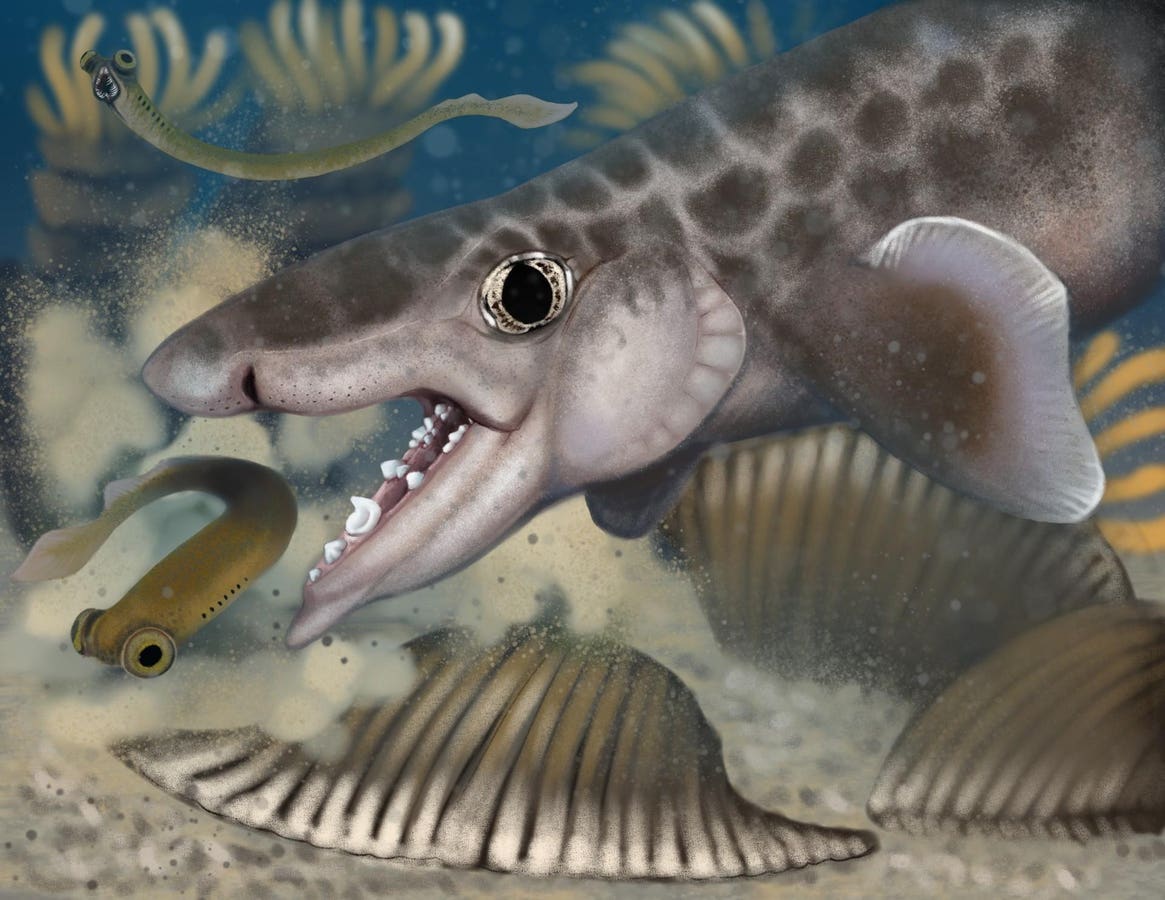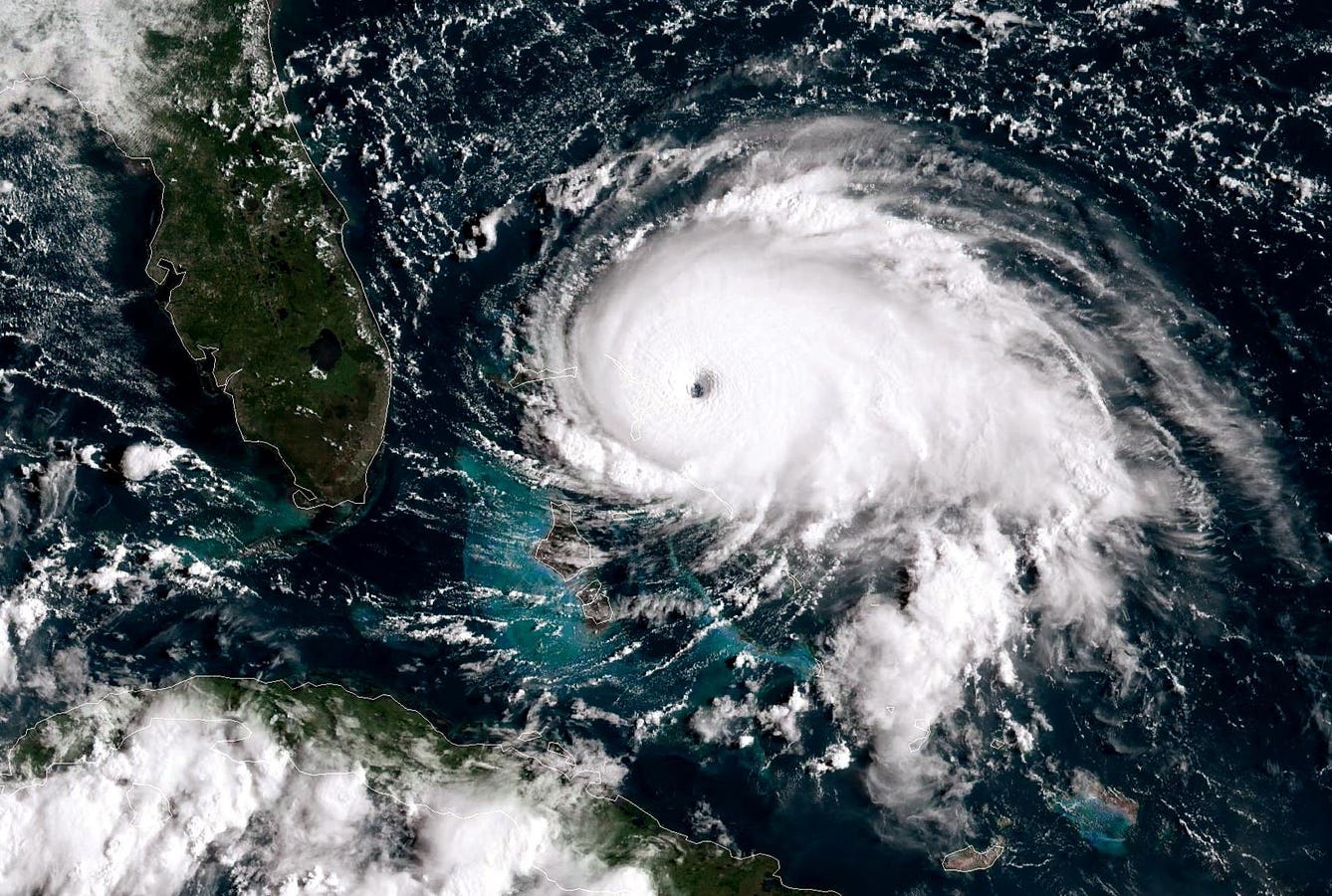Proposed reconstruction of the new to science species Macadens olsoni, discovered through fossil research at Mammoth Cave National Park.
Benji Paysnoe
As we get closer to the “-ber” months of the calendar year, when one says “caves,” it usually is followed by thoughts of bats and creepy crawlies as we inch towards Halloween season. Especially if that cave is in the middle of the United States of America. But sharks? No, it’s kind of hard to imagine “sharks” when you’re walking through a dark cave in the hills of Kentucky, yet that’s exactly what researchers at Mammoth Cave National Park have been doing. Last month (June 2025), a team of scientists announced the discovery of Macadens olsoni, a previously unknown shark species whose fossilized tooth had been quietly sitting in the cave’s walls since the Paleozoic Era. Dating back roughly 335 to 340 million years, this small piece of ancient anatomy is part of a larger story being told by the rock layers of the world’s longest known cave system. And it turns out that “sharks” and “caves” are actually quite synonymous, since Macadens olsoni marks the fifth new shark species discovered in Mammoth Cave since 2019, adding to a growing body of research that’s helping researchers reconstruct the underwater past of what is now solid limestone. “This discovery is a remarkable addition to our understanding of ancient marine life and underscores the importance of preserving and studying our natural history,” said Superintendent Barclay Trimble in the press release about this new species.
Located in central Kentucky, Mammoth Cave is the world’s longest known cave system with more than 400 miles (over 640 kilometers) of explored passageways… and counting! A UNESCO World Heritage Site and a U.S. national park, it’s renowned for its vast subterranean network, as well as its unique geology and rich biodiversity. Formed over millions of years in thick limestone layers, the cave has served as a natural archive, preserving fossils and geological features that date back hundreds of millions of years. Above ground, the park’s rolling hills, forested trails, and sinkholes offer a stark contrast to the silent, dark corridors below. Protected from wind, rain, and extreme temperatures, the cave’s environment has acted as a natural vault for ancient remains until interested and determined minds unearth them. “This finding not only enhances our knowledge of ancient marine ecosystems but also emphasizes the critical role of paleontological research in our national parks,” Trimble added. “Every discovery connects the past with the present and offers invaluable educational opportunities for students and the public.”
The fossil was found in the Ste. Genevieve Formation (read more about the stratigraphy of the cave here), a rock layer buried deep within the cave and not accessible to the public. While the fossil was originally discovered back in 2020, it wasn’t until now that scientists could confirm its identity as a distinct species. Unlike modern sharks with rows of replaceable teeth, Macadens olsoni had a whorl-like structure, which specialized for crushing, meaning it was likely a predator of small prey like mollusks and worms. Scientists believe Macadens olsoni grew to less than a foot in length (under 30 cm), making it more of a bottom-dwelling hunter than an apex predator. Though tiny by today’s standards compared to some modern sharks, it was still an importnat part of a marine ecosystem that once covered what is now dry land. At the time, the region that would become Mammoth Cave lay under a shallow tropical sea that supported a variety of life, from corals and shelled creatures to early fish and, of course, sharks.
A reconstruction of the new Middle to Late Mississippian ctenacanth sharks from Mammoth Cave National Park and northern Alabama. Glikmanius careforum is seen swimming in the foreground with two Troglocladodus trimblei swimming above.
Benji Paynose
Mammoth Cave has emerged as a hotspot for ancient shark discoveries, with multiple species new to science identified within its limestone walls. Among them is Strigilodus tollesonae, a small shark named after cave guide Kelli Tolleson, known for its spoon-shaped teeth adapted for crushing shelled prey. Other finds include Glikmanius occidentalis and Troglocladodus trimblei, two species of ctenacanth shark fossils. With over 70 shark and fish species identified so far, Superintendent Barclay Trimble has said that, “every new discovery at Mammoth Cave is possible due to collaborations.”
The name Macadens olsoni is a nod both to Mammoth Cave and to now-retired park scientist Rickard Olson, who played a vital role in documenting the cave’s fossil record. Olson contributed heavily to the Paleontological Resource Inventory, the project that was launched in 2019 and aims to catalog and study the park’s ancient biological history. This ongoing research is a collaboration between the National Park Service Paleontology Program, scientists at Mammoth Cave, and the Smithsonian’s Paleobiology Department.
While many people visit Mammoth Cave to explore its vast chambers and underground passages for their sheer size and stunning beauty, few realize the sheer number of prehistoric secrets hidden in its walls. In fact, we don’t truly know how many new-to-us species are waiting to be uncovered here. Thus, discoveries like Macadens olsoni are a great reminder that the land we walk on was once something entirely different… and that the history of life on Earth is often buried just beneath our feet. That’s something worth digging into.









